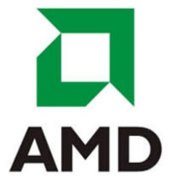
The loss of $2.34 a share compared to a loss of $1.77 billion, or $3.06 a share, a year ago. Revenue was down 33 percent to $1.16 billion, from $1.74 billion last year. Analysts expected $1.23 billion in revenue. After hours, AMD stock was down 8 cents to $1.94 a share.
[aditude-amp id="flyingcarpet" targeting='{"env":"staging","page_type":"article","post_id":103041,"post_type":"story","post_chan":"none","tags":null,"ai":false,"category":"none","all_categories":"business,","session":"B"}']Sunnyvale, Calif.-based AMD has been selling assets, and it has said it will lay off nine percent of its staff, or 1,100 employees, on top of 2,200 employees it shed during 2008. The company is also splitting itself in two, separating into a chip design company (which will keep the AMD name) and a manufacturing company (named, at least temporarily, The Foundry Company) in a deal that includes an investment from the Abu Dhabi government.
Robert Rivet, chief financial officer, said he expects revenues for the current quarter to decrease from the fourth calendar quarter. But he noted that the economic outlook is unclear so the company wasn’t going to offer any more guidance. The results echoed Intel’s own bad results from a week ago, when it reported $234 million in earnings, down 90 percent from a year ago, on revenue of $8.2 billion, which was down 23 percent from a year earlier. AMD had warned in early December that the fourth quarter was going to be much weaker than expected.
AI Weekly
The must-read newsletter for AI and Big Data industry written by Khari Johnson, Kyle Wiggers, and Seth Colaner.
Included with VentureBeat Insider and VentureBeat VIP memberships.
Dirk Meyer, chief executive, said he took heart that the company launched a series of good chips on both the server and consumer fronts that will position it better against Intel. The company’s graphics division has launched a series of new mobile graphics products to compete with Nvidia. It also launched new platforms at the International Consumer Electronics Show (CES) for gamer PCs, mainstream consumers, and ultra-light notebooks. While low-cost computers (dubbed netbooks) are increasingly popular, Meyer said he believes AMD’s solution for a more capable light notebook — the Yukon platform — will provide a better experience for consumers who might otherwise be drawn to netbooks.
The company has a shareholder meeting on Feb. 10, and the company expects to close the Abu Dhabi deal within a couple of days after that. That will bring $700 million in investment to AMD (the chip design firm) and $1.4 billion into AMD’s manufacturing company. In spite of that, Meyer said the company would redouble its efforts in 2009 to manage its cash and control expenses.
Intel sent a letter questioning the legality of AMD’s split and whether it would, as AMD says, truly have the rights to creating Intel-compatible chips if it divides the company in two. AMD contends that it has specific legal rights in a cross-license agreement with Intel that allows AMD or any of its subsidiaries — as the manufacturing company will be — to make Intel-compatible, or x86, chips.
AMD’s target is to lower its breakeven expenses as much as possible, and it hopes to hit breakeven (at about $1.3 billion in operating expenses) by the second quarter. But it isn’t promising it will hit that target, given the uncertain revenue picture.
VentureBeat's mission is to be a digital town square for technical decision-makers to gain knowledge about transformative enterprise technology and transact. Learn More
